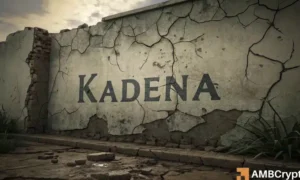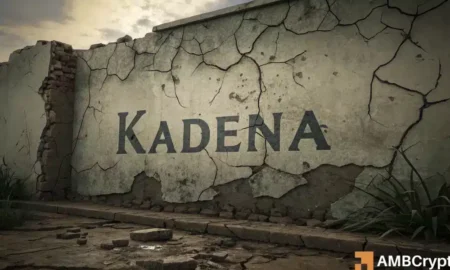Kadena Foundation Shuts Down Operations: What It Means for the Blockchain Community
The Kadena Foundation, which was once heralded as a promising alternative in the blockchain space, has officially announced its decision to cease all business operations and dissolve its organization. This decision comes amid challenging market conditions and a recognized inability to sustain ongoing development efforts. In a recent post on social media platform X, the Kadena team stated that they could no longer maintain the Kadena blockchain and would halt all active maintenance immediately. This announcement has impacted the value of KDA, Kadena’s native token, causing it to plummet more than 55% in just 24 hours, bringing it down to below 9 cents.
Despite this troubling news, the Kadena blockchain will continue to operate thanks to independent miners and community developers. A small team from Kadena will supervise the transition and provide a new node binary to ensure network continuity without direct involvement from the foundation. Additionally, over 566 million KDA tokens are still earmarked for mining rewards until 2139, with another 83.7 million tokens expected to unlock by 2029. Nevertheless, the departure of the core development team places the future of Kadena in a precarious position, relying heavily on community and ecosystem projects for maintenance and growth.
Kadena was founded by Stuart Popejoy and Will Martino, both former engineers at JPMorgan. The platform launched in 2019, proudly pitching its unique "braided" architecture as a scalable proof-of-work solution. By combining traditional mining with smart contract functionality and its proprietary programming language, Pact, Kadena aimed to carve out its market niche. At the height of its success in 2021, the KDA token traded above $25, and the project reached a staggering valuation of $25 billion. However, this initial excitement has waned over the past few years, as newer proof-of-stake and modular blockchains have taken center stage in the funding and development landscape.
The diminished activity and engagement in the Kadena ecosystem reflect a broader trend in the blockchain community, where newer technologies like proof-of-stake have captured investor interest. While Kadena was initially backed by high-profile early investors and positioned as a hybrid public-private blockchain, its market presence has increasingly eroded, raising concerns among its dedicated user base. With the foundation’s sudden closure, the chain’s fate hangs in the balance, necessitating a robust community response for continued development and maintenance.
The fallout from the Kadena Foundation’s closure isn’t just a financial issue; it poses significant questions for governance and support within the blockchain space. As independent miners and developers step in to fill the void, the community must decide how to steer the project forward. This situation underscores the often volatile nature of the crypto market, where optimism can quickly turn to despair. The importance of a thriving, active development team cannot be overstated; they play a vital role in project innovation, security, and sustainability.
In conclusion, the Kadena Foundation’s abrupt shutdown signals a challenging turning point for the Kadena blockchain. While it remains operational and continues to be supported by community efforts, the loss of its primary development team raises concerns about its long-term viability. As the blockchain space rapidly evolves, the Kadena community must rally to sustain the momentum of this once-prominent project amidst shifting market dynamics. The future of Kadena will ultimately depend on collective efforts to adapt and innovate in an increasingly competitive environment.

















